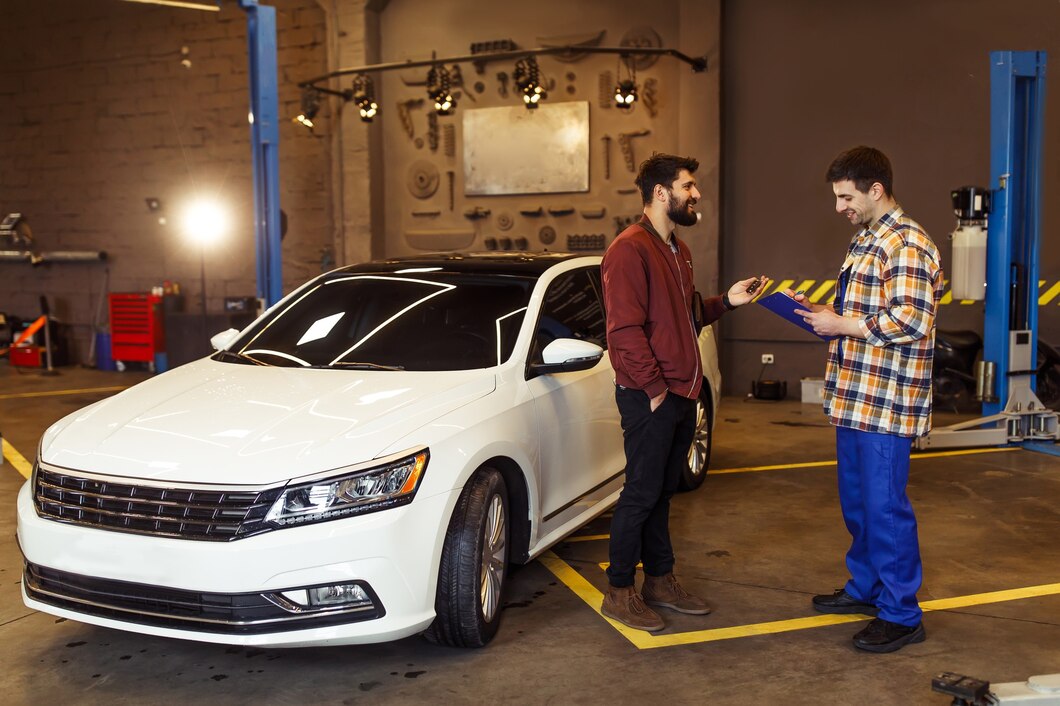Master the Basics of Exterior Detailing

When starting your car detailing journey, you must first become proficient in exterior detailing. This is the most visible part of the detailing process and requires attention to detail. Here’s how to tackle exterior detailing:

Training Focus:
- Washing Techniques: Learn how to properly wash a car without causing scratches or swirl marks. This means using a two-bucket method (one for soapy water and one for rinsing your mitt), microfiber towels, and soft brushes to clean hard-to-reach areas.
- Drying Method: Properly drying the car is essential to prevent water spots. Use a microfiber drying towel or a car dryer to dry the vehicle after washing.
- Clay Bar Treatment: Using a clay bar is crucial for removing bonded contaminants from the paint. Learn how to use it effectively without damaging the paintwork.
- Polishing and Waxing: Polishing will restore the paint’s smoothness and shine, while waxing adds a protective layer. This is where you can perfect the technique of achieving a glossy, mirror-like finish.
Why This is Important: Exterior detailing not only improves the car’s appearance but also preserves its finish. Mastering these basics helps ensure that you leave your car with an immaculate look that lasts.
2. Understand the Importance of Interior Detailing
While the exterior of a car gets all the attention, the interior is just as important for a thorough detailing service. Training on interior detailing is essential because it’s where cleanliness and comfort intersect.
Training Focus:
- Vacuuming and Surface Cleaning: Learn the best practices for vacuuming carpets, seats, and hard-to-reach areas. Also, get familiar with cleaning surfaces such as dashboards, door panels, and consoles.
- Leather Care: Leather seats and interiors require specialized cleaning and conditioning to prevent cracking or fading. Training should teach you how to clean and treat leather with appropriate cleaners and conditioners.
- Upholstery and Carpet Cleaning: Use techniques like hot water extraction or steam cleaning to deep clean fabric seats and carpets. Training will show you how to use these methods properly to ensure you get rid of stains and dirt without damaging the materials.
- Odor Removal: Whether it’s from smoke, food, or other sources, learn techniques for eliminating unpleasant odors. Ozone machines, air purifiers, and proper ventilation are commonly used in professional detailing to keep the vehicle smelling fresh.
Why This is Important: A clean interior enhances comfort for the driver and passengers and contributes significantly to the vehicle’s overall appeal. Understanding the proper methods ensures you’re creating a high-quality, professional result that customers will appreciate.
3. Learn Advanced Techniques for Paint Protection
If you want to take your detailing skills to the next level, you need to get trained in advanced techniques like paint correction and paint protection. These techniques are often the difference between a good detail and an exceptional one.
Training Focus:
- Paint Correction: This involves removing swirl marks, scratches, and other imperfections from the vehicle’s paint surface using polishes and buffers. Proper training will teach you the correct tools and products to use and how to prevent further damage to the paint.
- Ceramic Coating Application: Ceramic coatings offer long-lasting protection against dirt, water, and contaminants. They help maintain the car’s shine and make future cleaning much easier. Proper training on applying ceramic coatings will ensure a smooth and durable application that lasts for months or even years.
- Paint Protection Film (PPF): Learn how to apply PPF to protect the vehicle from rock chips, scratches, and other physical damage. This is an advanced skill that requires patience and precision to apply the film without leaving air bubbles or wrinkles.
Why This is Important: Paint protection services not only improve the car’s appearance but also increase its longevity and resale value. By mastering these techniques, you can offer additional services that set you apart from the competition.
Conclusion
Car detailing is both an art and a science. By focusing on the basics of exterior and interior detailing, learning advanced techniques for paint protection, and committing to proper training, you can become an expert in the field. Whether you’re considering a career in car detailing or just want to elevate your vehicle’s maintenance, these tips will help you deliver top-notch results every time.
With the right training, you’ll learn to approach every detail with precision, ensuring that your cars look their absolute best. Ready to start your car detailing journey? Sign up for a training course today and start perfecting your craft!


